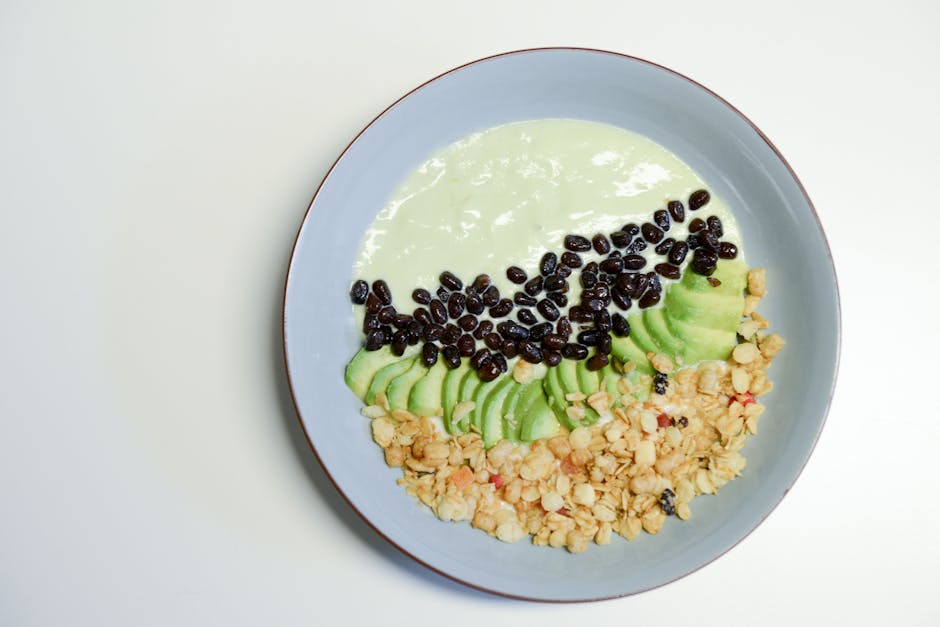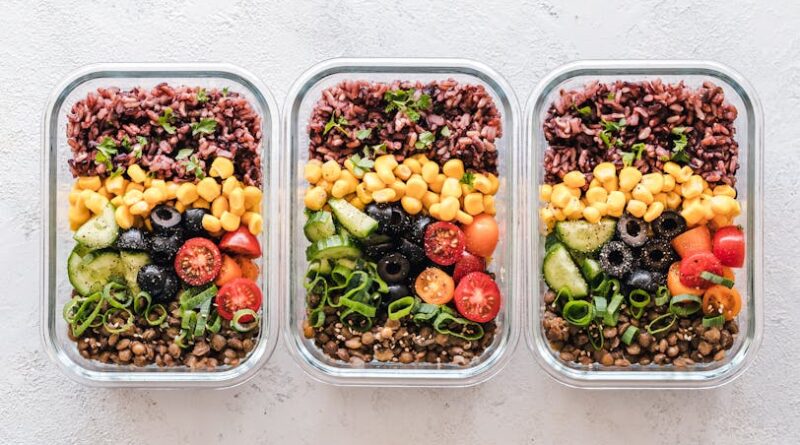How to Make a Balanced Meal Plan
When it comes to maintaining a healthy lifestyle, one of the key factors that often gets overlooked is meal planning. Creating a balanced meal plan is not just about counting calories or following a trendy diet. It’s about nourishing your body with the right nutrients it needs to function at its best. In this comprehensive guide, we will delve into the art of making a balanced meal plan, exploring the importance of each food group, debunking common myths, and providing practical tips to help you achieve a well-rounded diet.
The Importance of a Balanced Meal Plan

Before we dive into the nitty-gritty details of creating a balanced meal plan, let’s first understand why it is essential. A balanced meal plan is crucial for maintaining overall health and well-being. By incorporating a variety of foods from different food groups, you ensure that your body receives all the essential nutrients it needs to thrive.
When you consume a balanced diet, you are more likely to have stable energy levels throughout the day, improved digestion, better weight management, and reduced risk of chronic diseases such as heart disease, diabetes, and certain types of cancer. Additionally, a balanced meal plan can help support your immune system, enhance cognitive function, and promote healthy aging.
The Components of a Balanced Meal Plan

Creating a balanced meal plan involves incorporating foods from various food groups to ensure you are getting a wide range of nutrients. The key components of a balanced meal plan include:
1. Fruits and Vegetables
Fruits and vegetables are packed with vitamins, minerals, fiber, and antioxidants that are beneficial for your health. Aim to fill half of your plate with fruits and vegetables at each meal. Choose a variety of colors to ensure you are getting a diverse range of nutrients.
Examples of fruits and vegetables include leafy greens, berries, citrus fruits, bell peppers, broccoli, and sweet potatoes. Try to include both raw and cooked options in your meal plan for optimal nutrient absorption.
2. Protein Sources
Protein is essential for building and repairing tissues, supporting the immune system, and maintaining healthy muscles. Include a variety of protein sources in your meal plan, such as lean meats, poultry, fish, eggs, dairy products, legumes, nuts, and seeds.
When selecting protein sources, opt for lean cuts of meat, skinless poultry, fatty fish rich in omega-3 fatty acids, and plant-based proteins like tofu and lentils. Aim to include protein in every meal to help you feel full and satisfied.
3. Whole Grains
Whole grains are a great source of fiber, vitamins, and minerals. Choose whole grains such as brown rice, quinoa, oats, whole wheat bread, and barley over refined grains like white rice and white bread. Whole grains provide sustained energy and help regulate blood sugar levels.
Include whole grains in your meal plan by incorporating them into meals like salads, stir-fries, soups, and grain bowls. Experiment with different types of whole grains to add variety to your diet.
4. Healthy Fats
Healthy fats are essential for brain health, hormone production, and absorption of fat-soluble vitamins. Include sources of healthy fats in your meal plan, such as avocados, olive oil, nuts, seeds, and fatty fish like salmon and mackerel.
Avoid trans fats and limit saturated fats from sources like red meat and full-fat dairy products. Instead, focus on incorporating monounsaturated and polyunsaturated fats into your diet to support heart health and overall well-being.
5. Dairy or Dairy Alternatives
Dairy products are a good source of calcium, vitamin D, and protein. If you consume dairy, include options like milk, yogurt, and cheese in your meal plan. Opt for low-fat or non-fat varieties to reduce saturated fat intake.
If you are lactose intolerant or follow a plant-based diet, choose dairy alternatives like almond milk, soy milk, or coconut yogurt fortified with calcium and vitamin D. These options can provide similar nutrients found in dairy products without the lactose or animal products.
Creating a Balanced Meal Plan

Now that you understand the importance of a balanced meal plan and the key components to include, let’s discuss how to create a meal plan that meets your nutritional needs and preferences.
1. Set Realistic Goals
Before you begin creating a meal plan, it’s essential to set realistic goals that align with your dietary preferences, lifestyle, and health objectives. Consider factors like your daily calorie needs, dietary restrictions, meal prep abilities, and food preferences when planning your meals.
If you are looking to lose weight, maintain your current weight, or improve your overall health, tailor your meal plan to support those goals. Consult with a registered dietitian or nutritionist for personalized guidance based on your individual needs.
2. Plan Ahead
Meal planning is the key to success when it comes to maintaining a balanced diet. Take some time each week to plan your meals, create a grocery list, and prepare ingredients in advance. Planning ahead can help you make healthier choices, reduce food waste, and save time during the week.
Consider using a meal planning app or template to organize your meals for the week. Include a variety of foods from different food groups to ensure you are getting a balanced mix of nutrients. Experiment with new recipes and flavors to keep your meals exciting and enjoyable.
3. Incorporate a Variety of Foods
When creating a balanced meal plan, aim to include a variety of foods from each food group to ensure you are getting a diverse range of nutrients. Experiment with different fruits, vegetables, proteins, grains, and fats to keep your meals interesting and nutrient-dense.
Try to include seasonal produce in your meal plan to take advantage of fresh, flavorful ingredients that are at their peak. Incorporating a variety of colors, textures, and flavors can make your meals more visually appealing and satisfying.
4. Practice Portion Control
Portion control is an essential aspect of creating a balanced meal plan. Pay attention to serving sizes and avoid overeating by using measuring cups, food scales, or visual cues to estimate portion sizes. Eating in moderation can help prevent weight gain and promote better digestion.
When planning your meals, consider portioning out individual servings of proteins, grains, and vegetables to ensure you are getting the right balance of nutrients. Focus on eating mindfully, savoring each bite, and listening to your body’s hunger and fullness cues.
5. Stay Hydrated
Hydration is key to maintaining overall health and well-being. Include water, herbal teas, and other non-caffeinated beverages in your meal plan to stay hydrated throughout the day. Aim to drink at least eight glasses of water a day and more if you are physically active or live in a hot climate.
Avoid sugary drinks like soda and energy drinks, which can add unnecessary calories and sugar to your diet. Instead, opt for water, unsweetened tea, or infused water with fresh fruits and herbs for a refreshing and healthy beverage option.
Common Misconceptions About Balanced Meal Plans

Despite the widespread awareness of the importance of a balanced meal plan, there are still several misconceptions that can hinder individuals from achieving their health goals. Let’s debunk some common myths related to balanced meal plans:
Myth: Eating healthy is expensive.
While it’s true that some healthy foods can be pricier than processed options, there are many budget-friendly ways to eat a balanced diet. Shop for seasonal produce, buy in bulk, and look for sales and discounts to save money on groceries. Planning your meals and cooking at home can also help you cut down on food costs.
Myth: You have to eliminate certain food groups to be healthy.
Contrary to popular belief, you don’t have to cut out entire food groups to maintain a healthy lifestyle. All foods can fit into a balanced meal plan in moderation. Focus on portion control, variety, and moderation rather than strict limitations to enjoy a well-rounded diet.
Myth: Meal planning is time-consuming and complicated.
While meal planning does require some upfront effort, it doesn’t have to be overly complicated or time-consuming. Start small by planning a few days’ worth of meals at a time and gradually increase the duration as you become more comfortable with the process. Use meal planning tools and resources to streamline the process and make it more manageable.
Conclusion
To wrap things up, creating a balanced meal plan is an essential part of maintaining a healthy lifestyle. By incorporating a variety of foods from different food groups, practicing portion control, and staying hydrated, you can nourish your body with the nutrients it needs to thrive. Set realistic goals, plan ahead, and experiment with new recipes to keep your meals exciting and enjoyable.
Remember that a balanced meal plan is not about perfection but about making small, sustainable changes that support your overall health and well-being. Whether you are looking to lose weight, improve your energy levels, or simply feel better in your body, a balanced meal plan can help you achieve your health goals and live your best life.




